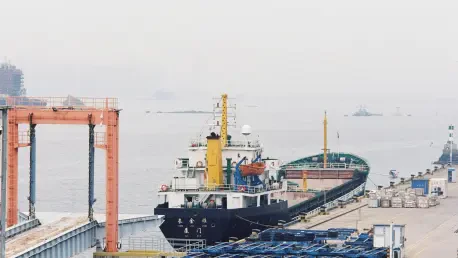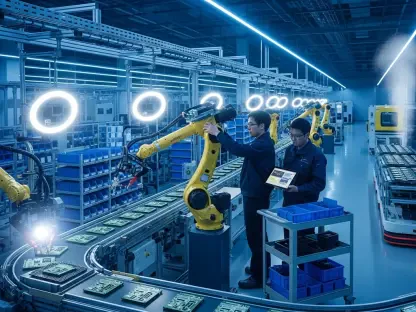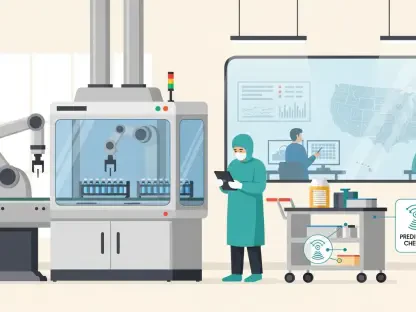Market Context: A Pivotal Turn in Automotive Supply Chains
In the complex web of global automotive supply chains, a seismic shift is underway as General Motors (GM), a titan of American manufacturing, mandates its vast network of suppliers to sever ties with China by 2027. This directive, emerging as a response to mounting geopolitical tensions and trade uncertainties, underscores a critical challenge facing the industry: how to balance cost efficiency with supply chain resilience in an era of economic decoupling. With China historically serving as a linchpin for automotive parts and raw materials, GM’s decision signals a profound reconfiguration that could reshape market dynamics for years to come. This analysis aims to dissect the driving forces behind this bold strategy, evaluate current trends in the automotive sector, and project future implications for stakeholders across the value chain. By exploring data, patterns, and strategic forecasts, the goal is to provide a comprehensive market perspective on this transformative move.
Deep Dive into Market Trends and Strategic Drivers
Geopolitical Pressures Reshaping Supply Chain Strategies
The automotive industry is grappling with an unprecedented wave of geopolitical pressures that have thrust supply chain resilience into the spotlight. Tensions between the US and China, characterized by fluctuating tariffs and export restrictions, have created a volatile environment for manufacturers like GM. Recent disruptions, such as China’s tightened controls on rare-earth elements critical for electric vehicle (EV) batteries, have exposed vulnerabilities in relying on a single dominant source. GM’s directive to eliminate Chinese sourcing by 2027, particularly for North American-produced vehicles, reflects a strategic pivot toward mitigating these risks. Market data indicates that over 60% of automotive electronics and a significant share of commodity parts currently originate from China, highlighting the scale of dependency now under scrutiny. This trend of de-risking is not isolated to GM; it mirrors a broader industry shift as companies reassess long-standing global networks in favor of stability over short-term cost savings.
Supplier Dynamics: Challenges in a Compressed Timeline
Suppliers, the backbone of automotive production, face a daunting task as they navigate GM’s aggressive timeline to exit Chinese sourcing within the next few years. China’s dominance in specialized segments like tool and die manufacturing, lighting, and electronics—built over decades—means alternative sources are neither abundant nor immediately cost-competitive. Industry estimates suggest that transitioning to non-Chinese suppliers could increase production costs by 15-20% in the short term, straining margins for smaller tier-two and tier-three suppliers. While GM prioritizes North American sourcing, it remains open to global alternatives outside China, yet the scarcity of scalable options poses a significant bottleneck. This market reality underscores a tension between strategic imperatives and operational feasibility, with suppliers racing to reconfigure networks under intense pressure. The risk of production delays looms large, potentially impacting delivery schedules and consumer pricing in the near term.
Industry-Wide Ripple Effects: A Push Toward Nearshoring
GM’s move is catalyzing a domino effect across the automotive sector, amplifying a growing trend toward nearshoring—relocating supply chains closer to end markets. Competitors are observing closely, with many likely to accelerate their own de-risking strategies as access to non-Chinese raw materials and components becomes a competitive differentiator. National security concerns, especially around critical materials like lithium and rare-earths for EV batteries, are further driving investments in domestic production capacities. Market projections indicate that by 2027, North American sourcing for automotive parts could rise by 25%, fueled by policy incentives and corporate initiatives. However, this shift risks higher operational costs in regions with less mature manufacturing infrastructure, potentially reshaping profit structures. The broader implication is a redefinition of global trade patterns, as the industry prioritizes regional resilience over the once-dominant model of lowest-cost sourcing.
Projections: Mapping the Future of Automotive Supply Networks
Emerging Trends in Regional Sourcing and Technology
Looking ahead, the automotive supply chain landscape is poised for a significant transformation, with regional sourcing emerging as a cornerstone of future strategies. GM’s push to localize production aligns with projections that nearshoring could account for nearly 40% of supply chain restructuring efforts by the end of this decade. Technological advancements, such as automation and additive manufacturing, are expected to bolster North American capacity, reducing reliance on overseas production for complex components. Additionally, partnerships with US-based firms for battery materials signal a burgeoning market for domestic resource extraction and processing. Government policies, including potential tariff adjustments and incentives for local manufacturing, will likely play a pivotal role in shaping the speed and scope of this transition. These trends suggest a gradual but decisive shift toward self-reliance in critical sectors of the automotive market.
Economic and Regulatory Influences on Market Evolution
Economic factors and regulatory frameworks are set to further influence the trajectory of supply chain reconfiguration. Rising costs associated with transitioning away from Chinese suppliers could translate into higher vehicle prices, with analysts forecasting a 5-10% increase in consumer costs over the next three years if alternative sourcing remains expensive. Simultaneously, bipartisan policy shifts in the US aimed at reducing economic dependence on China are expected to intensify, potentially through stricter mandates on national security-related materials. Such regulations could accelerate investments in alternative supply hubs, particularly in allied regions like Canada and Mexico. Market forecasts also highlight a potential bottleneck in skilled labor and infrastructure readiness, which may temper the pace of nearshoring unless addressed through public-private collaboration. These economic and regulatory dynamics will be critical in determining whether GM’s vision becomes a market standard or a cautionary tale.
Long-Term Market Implications and Competitive Landscape
Over the long term, GM’s directive could redefine competitive dynamics within the automotive industry, setting a precedent for how global manufacturers balance cost with security. Companies that successfully adapt to regionalized supply chains may gain a strategic edge, particularly as consumer demand for sustainably sourced and locally produced vehicles grows. Projections suggest that by 2030, firms with diversified, non-China-dependent networks could see a 10-15% improvement in supply chain stability metrics, enhancing their resilience to geopolitical shocks. However, the transition period carries risks of market fragmentation, as smaller players struggle to match the scale of investment required for such sweeping changes. The interplay between innovation, policy support, and market adaptation will ultimately dictate whether this shift fosters a more robust industry or exposes new vulnerabilities in an already complex ecosystem.
Reflections and Strategic Pathways Forward
Reflecting on the market analysis, it becomes evident that GM’s decision to cut supply chain ties with China by 2027 marks a turning point for the automotive sector, driven by geopolitical necessity and a quest for resilience. The examination of current trends reveals deep-rooted challenges for suppliers and a broader industry pivot toward nearshoring, while projections point to a future shaped by technological innovation and regulatory influence. For stakeholders, the path forward involves proactive diversification—identifying and onboarding alternative suppliers to preempt disruptions. Suppliers are encouraged to forge strategic partnerships and invest in localized capacity to align with emerging market demands. Manufacturers need to prioritize transparency with consumers about potential cost impacts, framing them as investments in long-term stability. Policymakers have a role in facilitating infrastructure development and incentives to ease the transition. These actionable steps, grounded in the insights from this analysis, offer a roadmap for navigating the evolving landscape, ensuring adaptability in a time of profound change.









